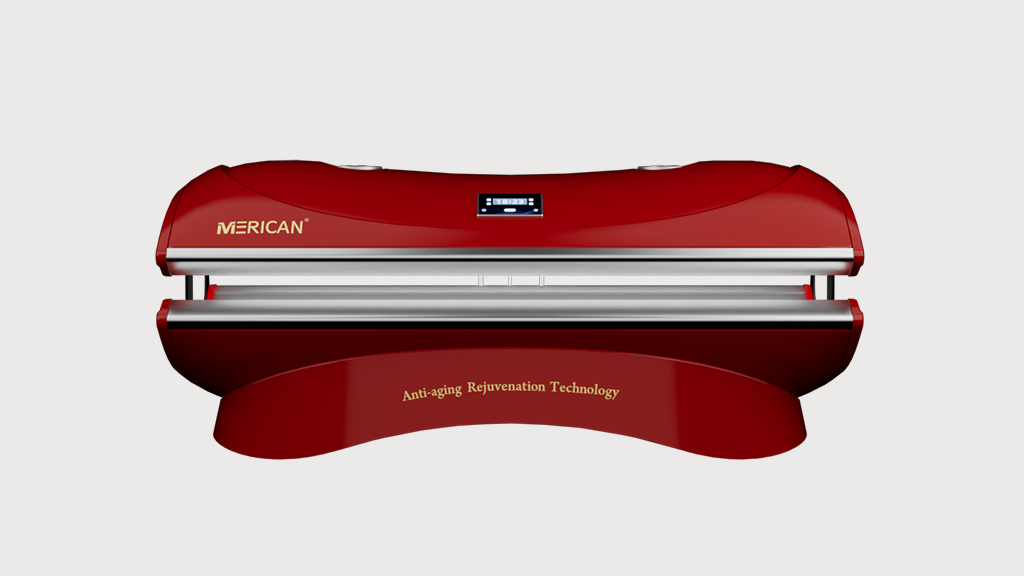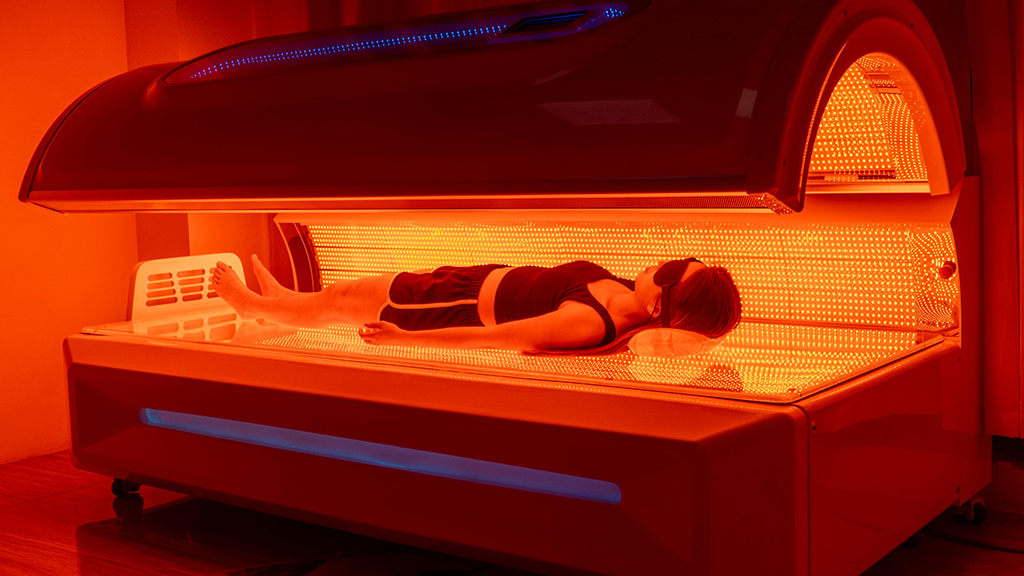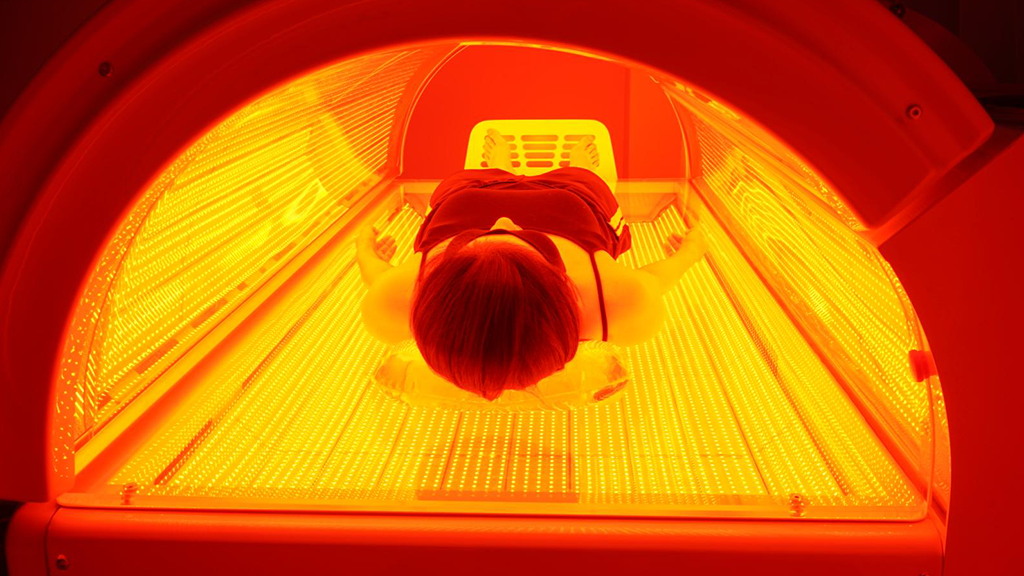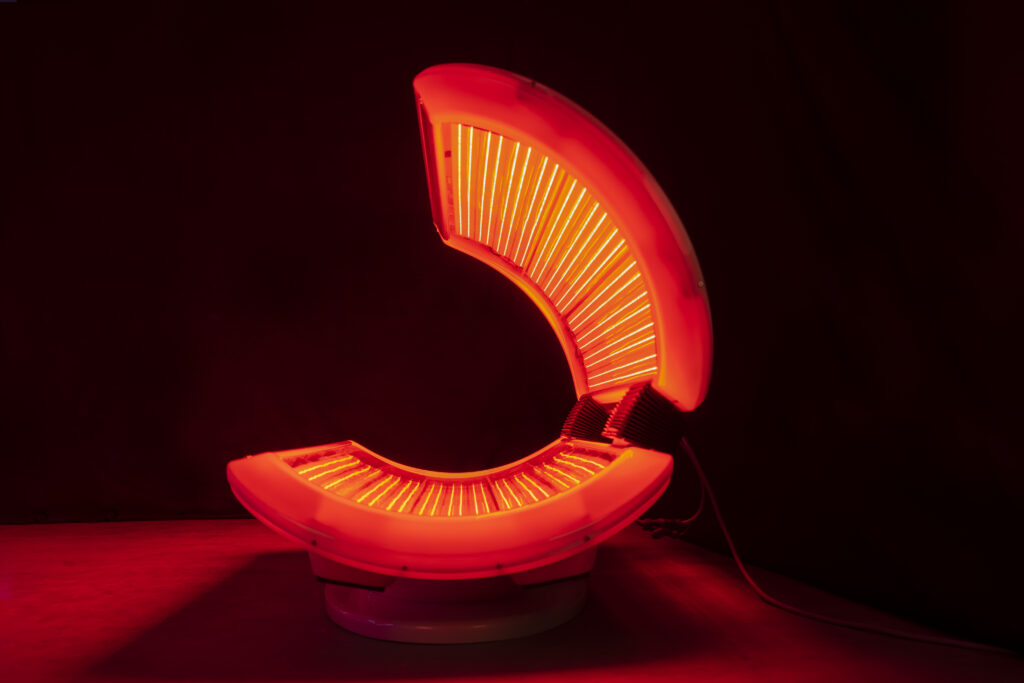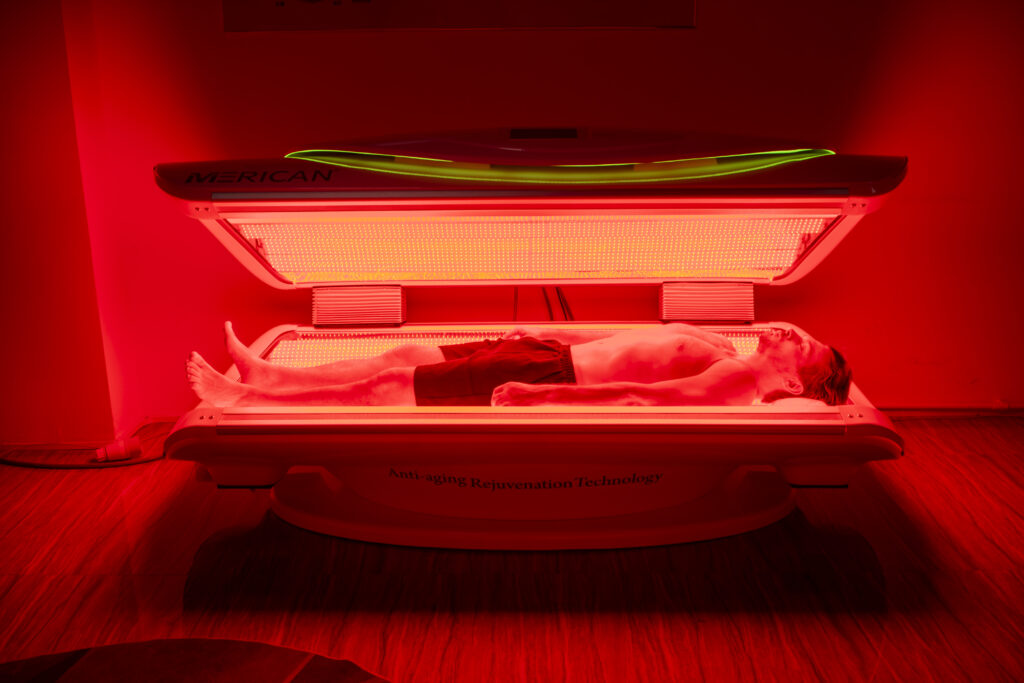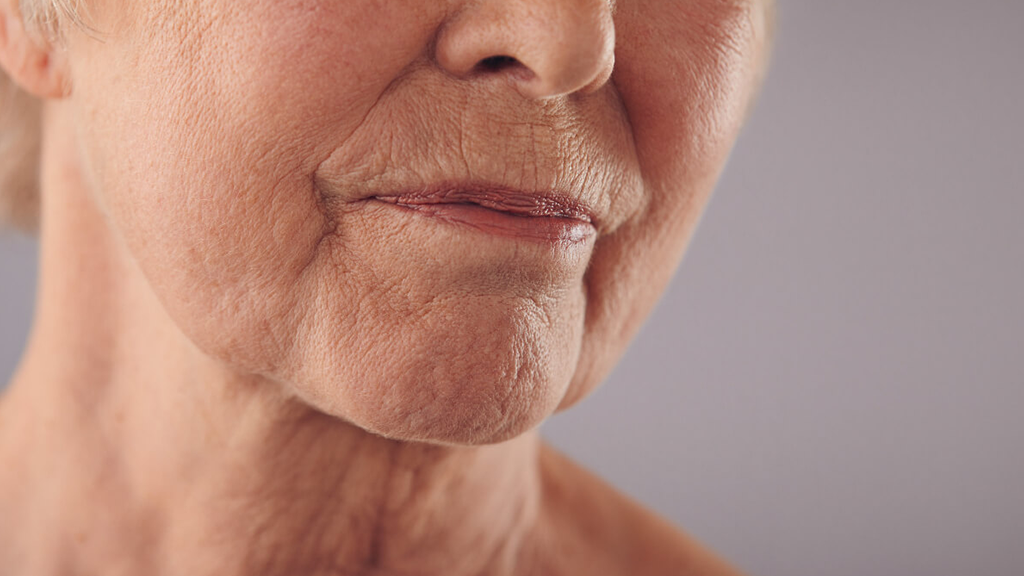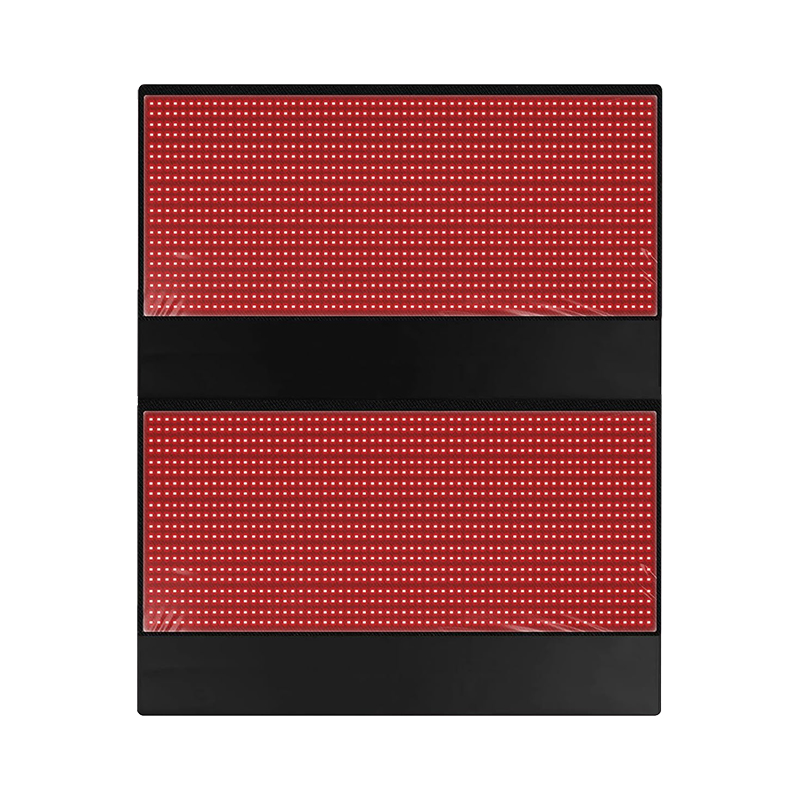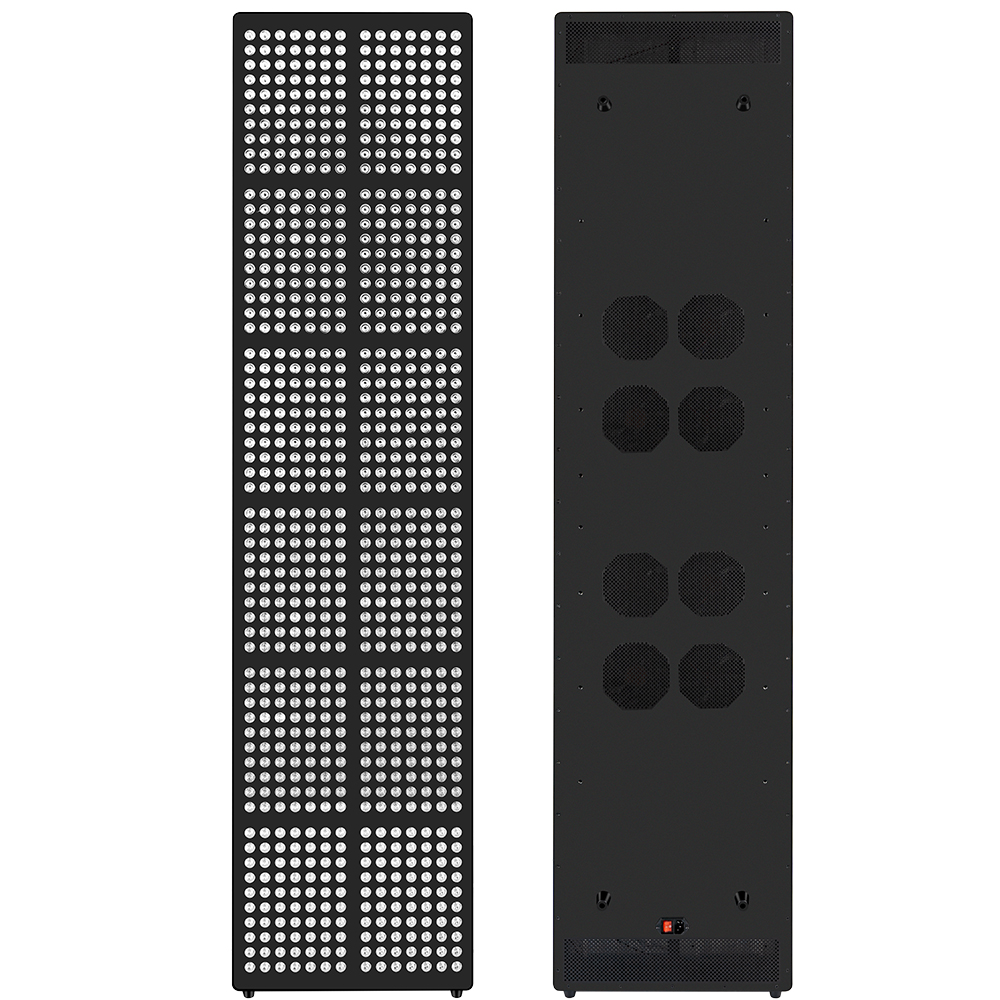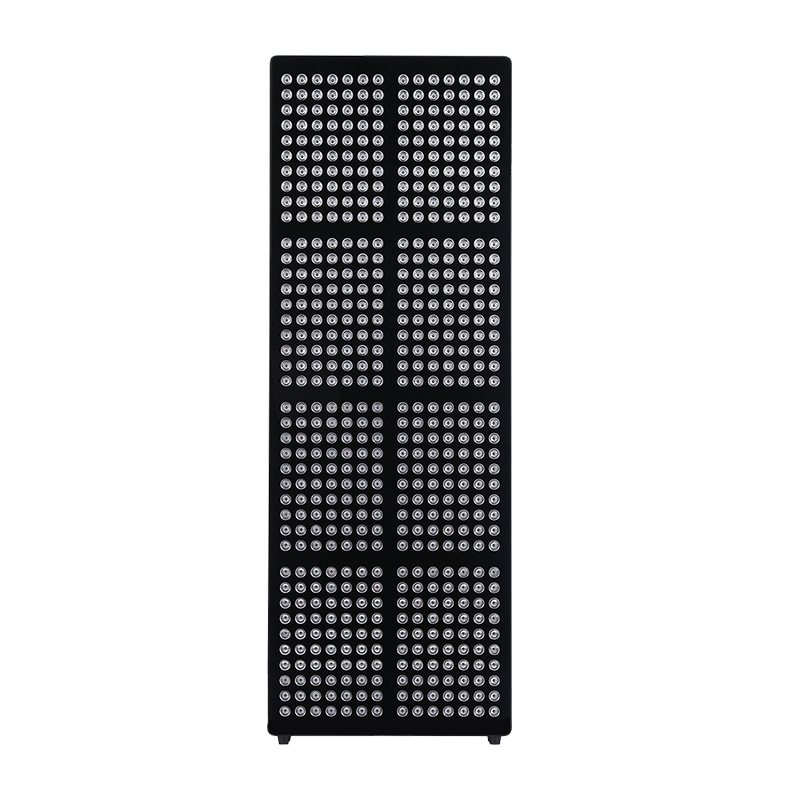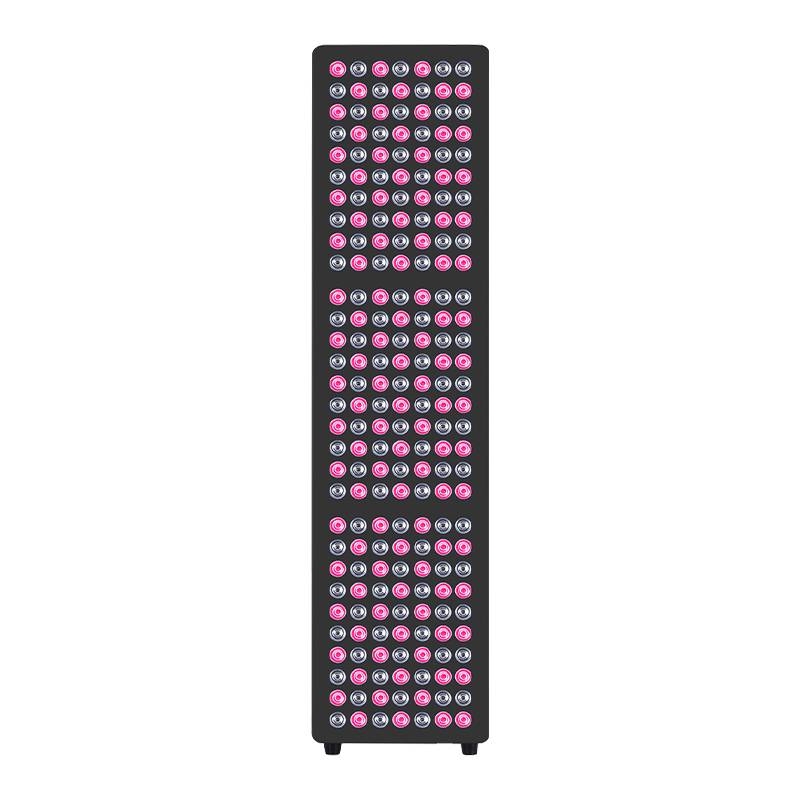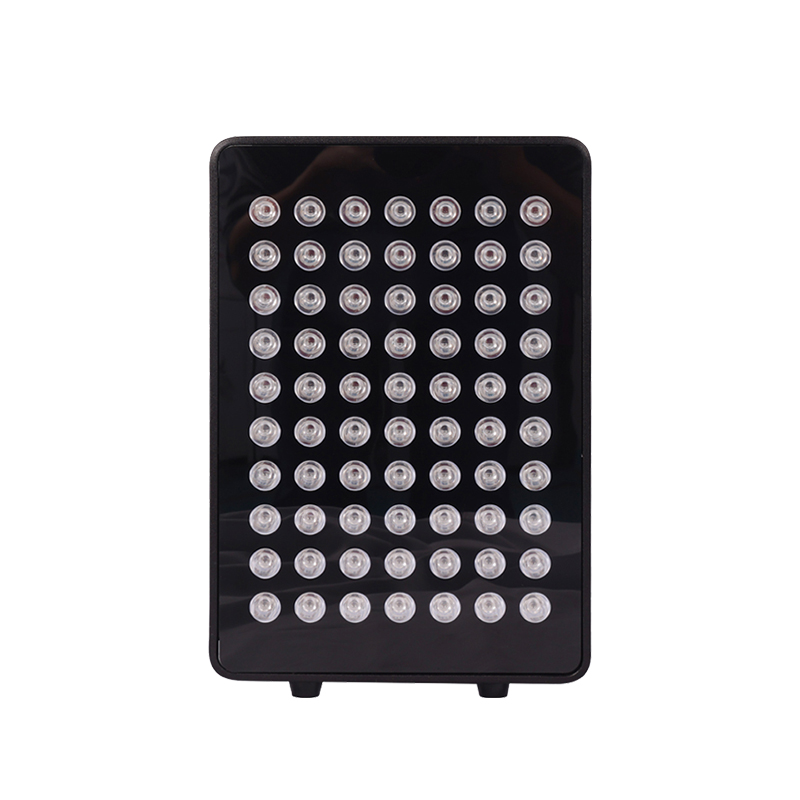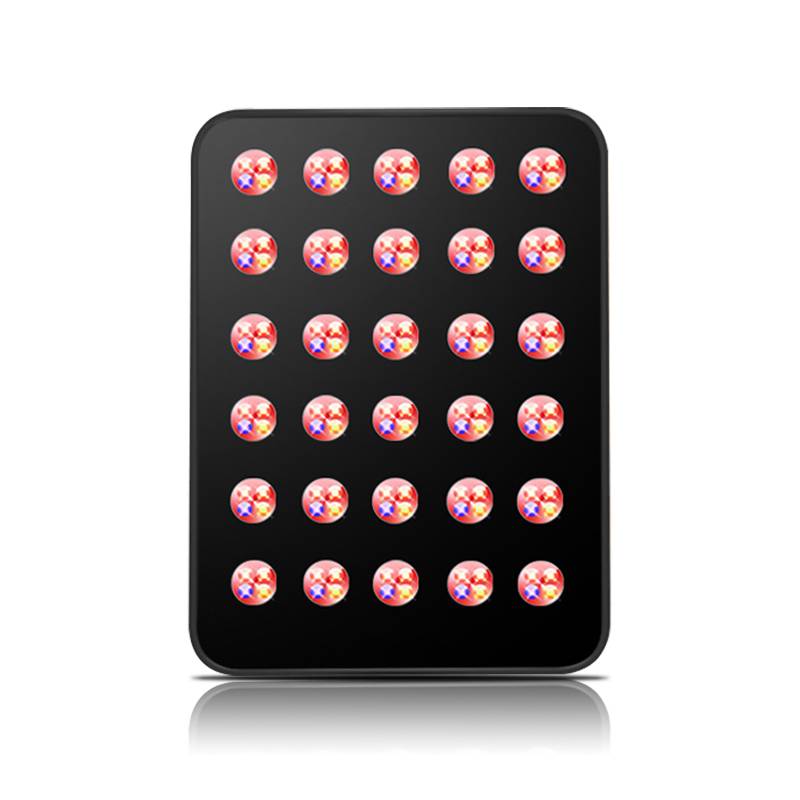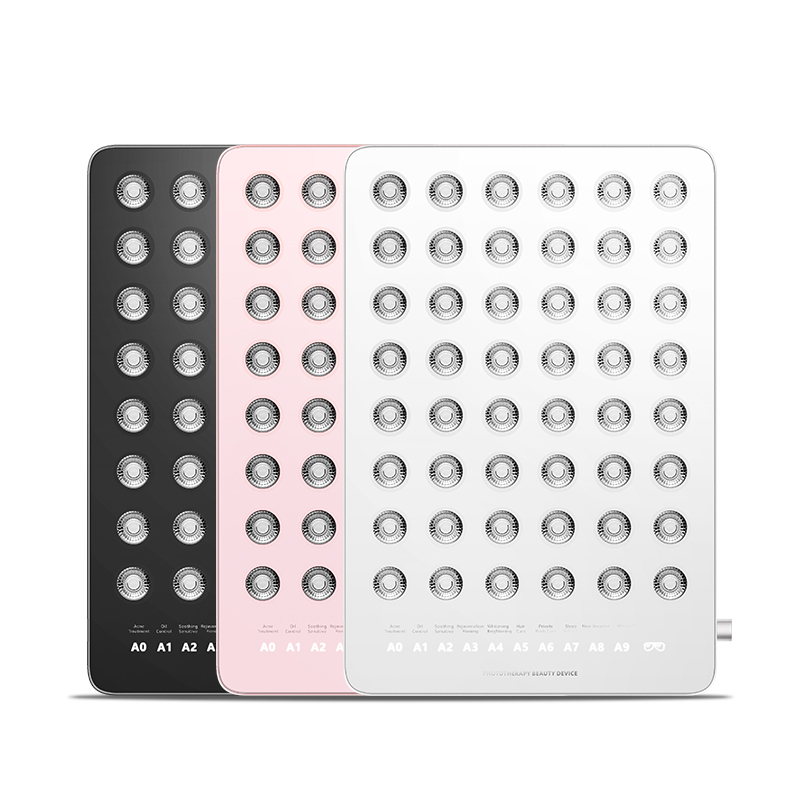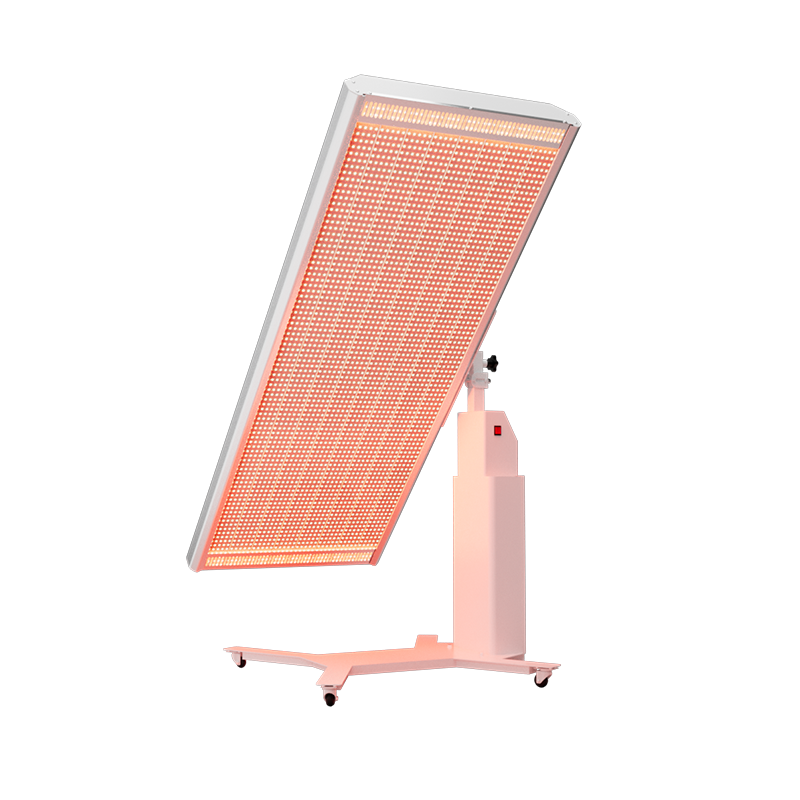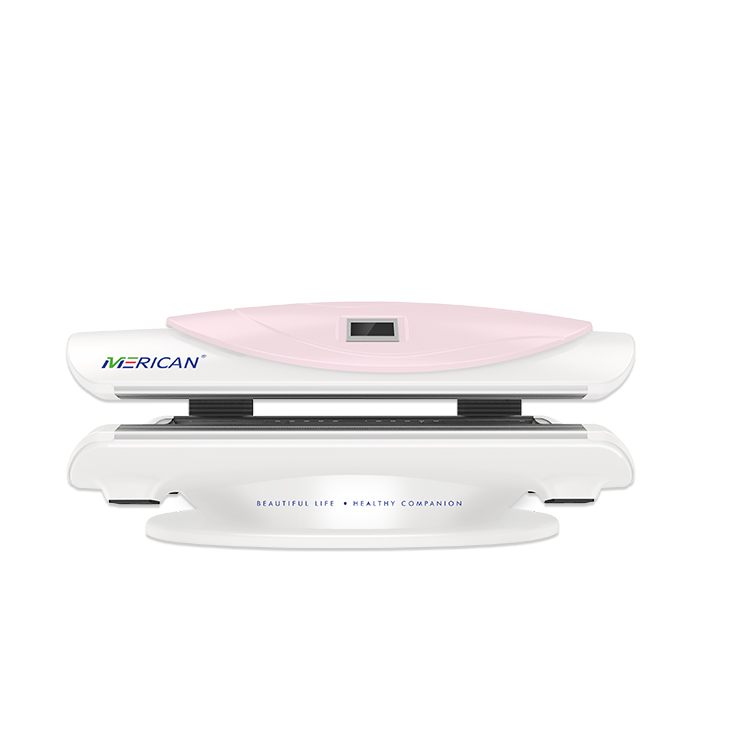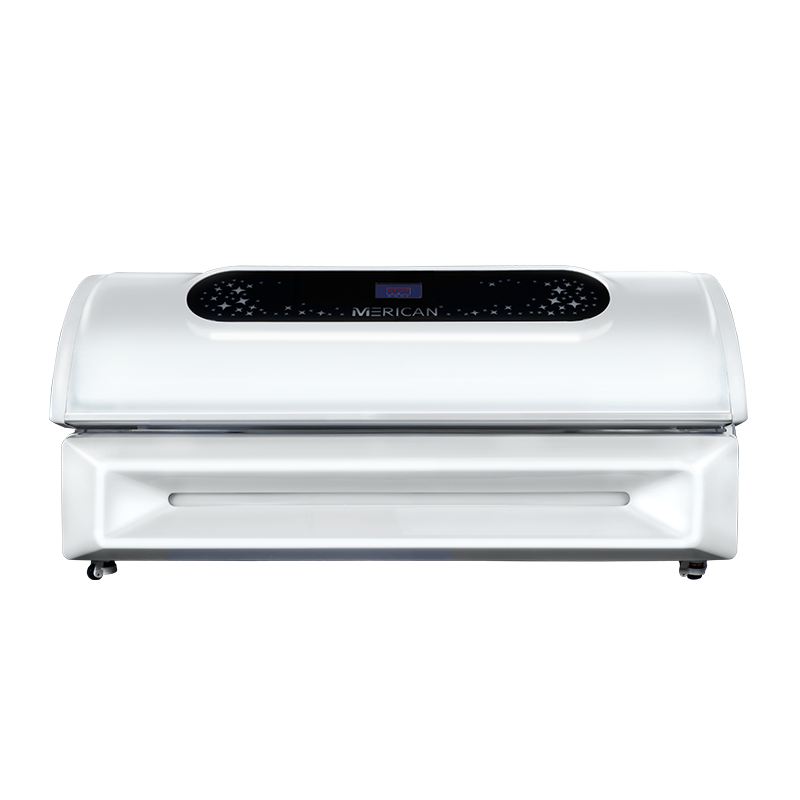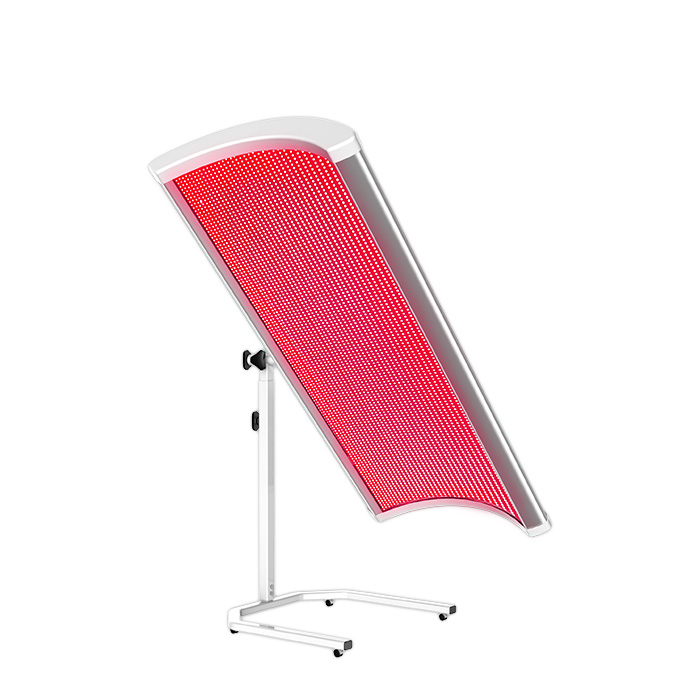Wie die Rotlichttherapie dazu funktioniert, den Schlaf auf natürliche Weise zu verbessern

Rotlichttherapie, auch als Photobiomodulation bekannt (PBM), ist eine nicht-invasive Behandlung, die rotes und infrarotes Licht mit niedriger Wellenlänge verwendet, um verschiedene biologische Prozesse im Körper zu fördern.
Was ist die Rotlichttherapie
Bei der rot leuchtend 630 Zu 850 Nanometer. Es ist bekannt, dass diese Wellenlängen tief in den Körper eindringen, Muskeln erreichen, Nerven, und sogar das Gehirn.
Im Gegensatz zu blauem oder weißem Licht, Rotlicht unterdrückt Melatonin nicht - das Schlüsselhormon, das an der Schlafregulierung beteiligt ist.
Wie es funktioniert, um den Schlaf zu unterstützen
- Rot- und Nahinfrarotlicht stimulieren Mitochondrien dazu, mehr ATP zu produzieren, Verbesserung der zellulären Reparatur und Reduzierung von Entzündungen - Schlüsselfaktoren bei der Verbesserung der gesamten Schlafqualität.
- Neurologisch, Rotlicht hilft, zirkadiane Rhythmen zu regulieren, indem es die Melatoninproduktion fördert und das Abendcortisol senkt, sowohl für das Sturz als auch für den Einschlafen.
Laut einer Studie, die in der veröffentlicht wurde Journal of Athletic Training, Rotlichttherapie für Basketballspielerinnen über zwei Wochen verbesserte ihre Schlafqualität und Melatonin -Werte signifikant.
Zusamenfassend, Rotlichttherapie arbeitet durch eine Mischung aus hormoneller Regulierung, Zirkadianer Rhythmusverstärkung, und Entzündungsreduzierung, All dies trägt zu erholsameren und natürlicheren Schlafmustern bei.
Top -Vorteile der Rotlichttherapie durch Schlafwissenschaft unterstützt
1. Unterstützt natürliche Melatoninproduktion
Melatonin, Sekretiert durch die Zirbeldrüse, ist wichtig, um den Schlaf zu initiieren und zirkadiane Rhythmen zu synchronisieren. Rotes Licht im Bereich von 630–670 nm unterdrückt Melatonin nicht und kann sogar seine natürliche Freisetzung unterstützen.
In eine Studie Bei rotierenden Nachtschichtarbeitern, 630 NM rotes Licht half dazu, die Melatoninspiegel aufrechtzuerhalten und gleich, was Melatonin erheblich reduzierte. Dies macht es ideal für Nachtschichtpersonal, die nächtliche Wachsamkeit benötigen, ohne Melatonin-betriebene Schlafzyklen zu stören.
2. Verbessert die zirkadiane Rhythmusausrichtung
Die ordnungsgemäße zirkadiane Rhythmusausrichtung sorgt tiefer, mehr restaurative Schlaf. Rotlicht hilft bei der Stabilisierung dieser Rhythmen, indem es Licht ohne Phasenverschiebungseffekte liefert-und damit eine sicherere Wahl für die Arbeitnehmer, Reisende, und diejenigen, die über Nacht künstlich blauem Licht ausgesetzt sind.

3. Reduziert die Latenz des Schlafes Beginn
Durch die Beruhigung des Nervensystems und die Förderung der Melatoninproduktion, Rotlichttherapie kann Ihnen helfen, schneller einzuschlafen. In einem kontrollierten Versuch, Die Teilnehmer, die am Abend rotes Licht benutzten, zeigten eine 28% Verringerung der Zeit, um über vier Wochen einzuschlafen.
4. Verbessert die Schlafqualität & Dauer
Klinische Daten zeigen eine 32 -minütige Erhöhung der gesamten Schlafzeit und verbesserte Punktzahlen im Pittsburgh Sleep Quality Index, nachdem Sie abends einen Monat lang die Rotlichttherapie verwendet haben.
5. Steigert tief (Slow -Wave) Schlafen
Polysomnographie -Aufzeichnungen zeigen, dass die Exposition gegenüber rotem Licht den Anteil von N3 erhöht (langsame Welle) schlafen, Die Phase, die für Gedächtniskonsolidierung und Stoffwechselgesundheit am kritischsten ist.
6. Balancen autonomes Nervensystemaktivität
Herzfrequenzvariabilität (HRV), Ein Marker für Stressresilienz, verbessert (Stress) Aktivierung und Verbesserung der parasympathischen (Ruhe und Verdau) Ton, einen ruhigen physiologischen Zustand für ruhiges Schlaf setzen.
Beste Zeit, um die Rotlichttherapie für den Schlaf zu verwenden
Wann, um eine Rotlichttherapie für einen besseren Schlaf zu verwenden
Der ideale Zeitpunkt, um die Rotlichttherapie für den Schlaf zu verwenden, ist 30 Zu 90 Minuten vor dem Schlafengehen. Dieses Timing fördert die Melatoninproduktion, ohne das Gehirn zu überstimulieren. Im Gegensatz zu blauem oder weißem Licht, rote Wellenlängen (Um 630–670 nm) Unterstützen Sie den natürlichen zirkadianen Rhythmus und helfen dabei, den Körper auf Ruhe vorzubereiten.
Wie man es effektiv benutzt
Integrieren:
- Schritt 1: Dunkelne Zimmerleuchten und rotes Licht für 10 bis 20 Minuten einschalten.
- Schritt 2: Übe langsame tiefe Atmung oder Achtsamkeitsmeditation unter dem roten Licht.
- Schritt 3: Fügen Sie beruhigende Elemente wie Lavendel -Aromatherapie oder Soft Instrumental Music hinzu.
- Schritt 4: Vermeiden Sie Bildschirme, Koffein, und mindestens schwere Mahlzeiten 1 Stunde vor dem Schlafengehen.
Diese multisensorische Routine unterstützt die Entspannung des Nervensystems und fördert einen tieferen Schlaf.

Wie lange und wie oft
Die meisten Studien empfehlen Sitzungen, die zwischen Dauer sind 10 Und 20 Minuten, Abhängig von der Lichtintensität und der Entfernung. Für die Schlafverbesserung, 3–5 Sitzungen pro Woche abends sind optimal. Langfristige Konsistenz (3–4 Wochen Minimum) ist Schlüssel.
Können Sie mit rotem Lichttherapie schlafen?? Technisch, Ja-wenn das Licht eine geringe Intensität und innerhalb von schlafsicheren Wellenlängen ist (z.B., 630–660 nm), Es kann als schwaches Lichtquelle bleiben. Die Verwendung vor dem Schlafengehen ist jedoch effektiver.
Wer kann davon profitieren - und wer sollte vorsichtig sein?
Die Rotlichttherapie kann besonders hilfreich sein für:
- Menschen mit Schlaflosigkeit oder verzögerter Schlafphasenerkrankung
- Häufige Reisende mit Jetlag erleben
- Verschiebung von Arbeitern mit gestörten zirkadianen Rhythmen
- Diejenigen mit hohem Abend Cortisolspiegel
- Ältere Erwachsene mit rückläufiger Melatoninproduktion
Jedoch, Personen mit Photosensitivität, Epilepsie, oder bestimmte Augenbedingungen sollten vor dem Gebrauch einen medizinischen Fachmann konsultieren.
Auch wenn Sie keine diagnostizierte Schlafstörung haben, Rotlichttherapie kann immer noch Ihre Abendentspannung und Schlafqualität verbessern, wenn sie regelmäßig verwendet werden.
Beste Rotlichtwellenlängen und -geräte zur Verbesserung des Schlafes

Der therapeutische Bereich von Rotlicht für den Schlaf liegt typischerweise zwischen 630 und 670 nm und 810–850 nm. Es wurde gezeigt, dass diese Wellenlängen subkutane Gewebe erreichen und biologische Prozesse beeinflussen, ohne das Gehirn zu überstimulieren.
Worauf Sie in einem Gerät suchen sollten
- Wellenlänge: Bevorzugen Sie 630–670 nm (Rot) und 810–850 nm (Nahinfrarot)
- Bestrahlungsstärke: 30–100 MW/cm² ist optimal für Schlafanwendungen
- Timereinstellungen: Eingebaute Timer sorgen für eine sichere Belichtung
- Zertifizierungen: Suchen Sie nach CE, RoHS, und FDA -Zulassungen aus Sicherheit
Empfohlene mericanische Geräte
Wellenlänge: 630nm / 660nm / 850nm
Berichterstattung: Ganzkörper; Großer Bestrahlungsbereich mit verstellbaren Bettwinkeln
Merkmale: Smart Touch Control, Timereinstellungen, CE & FDA zertifiziert
Am besten für: Professionell, Ganzkörper-Entspannung und verbesserte Schlafgewinnung
Wellenlänge: 660nm & 850nm
Berichterstattung: Vertikales Panel für die partielle oder Ganzkörperanwendung
Merkmale: Hohe Bestrahlung, Modulares Design, 15/30/60 meine Stunden, CE zertifiziert
Am besten für: Schlafzimmer oder Hausgebrauch vor dem Schlafengehen, Besonders für Hals- und Rückenbereiche
Wellenlänge: 630nm
Berichterstattung: Volles Gesicht mit ergonomischem Design
Merkmale: Eingebauter Timer, weicher Lederkontakt, Leicht und tragbar
Am besten für: Abendpflege und Entspannung des Gesichts vor dem Schlafengehen
Rotlichttherapie gegen andere Schlafhilfen
| Besonderheit | Rotlichttherapie | Melatonin -Nahrungsergänzungsmittel | Schlaf -Apps | Blue-Light Blocking Brille |
| Natürliche Hormonunterstützung | ✅ unterstützt natürliches Melatonin | ❌ künstliche Ergänzung | ❌ Minimaler Effekt | ✅ Indirekt |
| Nicht qualvoll | ✅ Ja | ❌ mögliche Abhängigkeit | ✅ Ja | ✅ Ja |
| Langfristige Vorteile | ✅ Ja (Biologischer Veränderung) | ❌ Nur kurzfristig | ❌ Limited | ❌ braucht externe Unterstützung |
| Nebenwirkungen | ✅ minimal, wenn es richtig verwendet wird | ❌ Benommenheit, Kopfschmerzen | ✅ wenige | ✅ wenige |
| Zeitliche Verpflichtung | 10–20 Minuten/Tag | Sofort | Fortlaufendes Engagement | Passiv |
Während Tools wie Schlaf Apps und Nahrungsergänzungsmittel ihren Platz haben, Rotlichttherapie sticht als körperlich aus, Intervention mit wissenschaftlich unterstützter Intervention, die sich mit den Ursachen für Schlafstörungen befasst-nicht nur Symptome.
FAQS
Ist rotes Licht für den Nachtgebrauch sicher?
Ja. Rotlichttherapie verwendet nichtionalisierendes Licht, Dies bedeutet, dass es keine Strahlungsrisiken trägt. Wenn sie richtig verwendet und nicht zu nahe an den Augen, Es wird für reguläre Abendroutinen als sehr sicher angesehen.
Wird rotes Licht mich wach halten?
NEIN. Im Gegensatz zu blauem oder weißem Licht, Rotlicht stimuliert nicht die Wake -Signale des Gehirns. Tatsächlich, Die Verwendung von Rotlichttherapie bei Nacht oder Morgen bietet unterschiedliche Vorteile - Nachtgebrauch -AIDS -Entspannung; Der Morgennutzung unterstützt Energie- und Stimmungsregulierung.
Kann ich mein Telefon nach rotem Lichttherapie verwenden??
Es ist nicht ideal. Die Exposition gegenüber blauem Licht von Bildschirmen kann den Melatonin-förderenden Effekten von Rotlicht entgegenwirken. Für beste Ergebnisse, Vermeiden Sie mindestens die Bildschirmzeit 30 Minuten nach Ihrer roten Lichtsitzung.
Ist es nur für Schlaflosigkeit?
Gar nicht. Auch diejenigen ohne chronische Schlafprobleme können von einer besseren zirkadianen Ausrichtung profitieren, Reduzierter Stress, und verbesserte Stimmung durch Rotlichttherapie.

